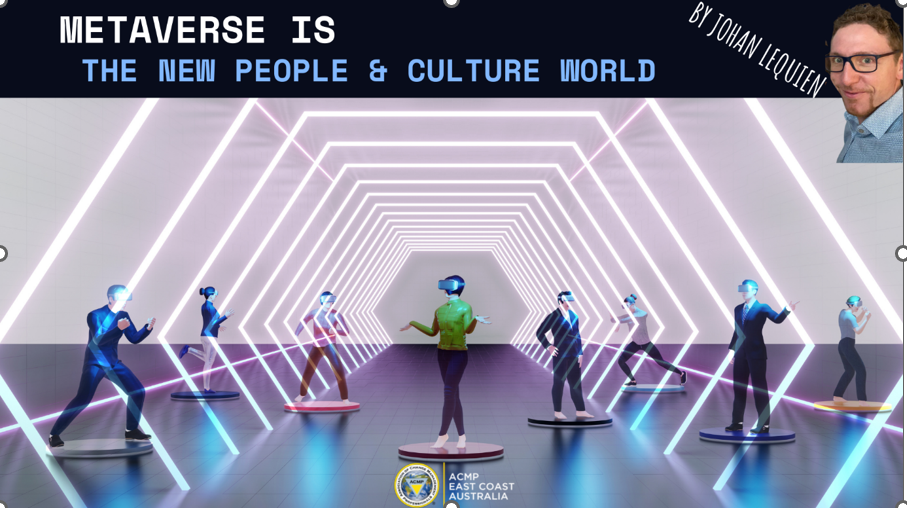Published by Johan Lequien
You probably heard about the Metaverse journey. Trying to find a way to be in touch with your emotions in a complete digital world. We recognise there’s a power there, not only to guide us in life, but to allow us to explore further areas. The concept is not new, not at all especially for the one who experienced Second Life or imagery world painted by different authors.
Moving our standards to a connected world
Did you know Seoul is creating a metaverse for a smarter city, and the overall idea is to build a connected city? The platform will help consolidate access to different city services. It will also make it easier to expand services that take advantage of 3D digital twins to improve access to local security footage, report fires and improve public infrastructure. For example, the S-Map service already provides a digital twin for urban planning, real-time fire monitoring and wind path analysis.
But what is the purpose of all of that? It’s about replicating universe to reduce carbon emissions, like Las Vegas who replicated his CBD to build new scenarios to improve transport distribution or improve building architecture to consume less energy. But it’s more about improving our user experience and satisfaction. This is where Change Management and Talent Management are deeply connected.
What’s in the metaverse for People & Culture?
This second universe offers new capabilities, new options. Some business services portal can for example provide startups a place to showcase new business ideas and service. An educational portal can bring together campus towns to provide coaching, collaboration and networking opportunities… and connect talents and recruiters.
According to a LinkedIn recent survey, over 38% of respondents to an HR Magazine poll of HR professionals said the technology is suitable for business and that they’re excited to use it.
Some companies are already adopting virtual reality (VR) technology and wearing VR goggles. This kind of technology intends to break down historical barriers, such as geography, within the workplace. Some Virtual Environments are already being created (Decentraland, The Sandbox, Virtual Park by PwC, Accenture Metaverse Business Group…) to give applicants the opportunities to create their avatar, walk around the company park and take part in their events. This gives the option for applicants to tour the office and meet potential colleagues, gaining a greater sense of everyday life at the organisation. Applicants can indeed learn more about the company they are applying, meet their people virtually from different business units and offices… at the same time. They can attend presentations including application process guidance, learn more about culture and values of the company, and hear from senior speakers about different themes/topics, key challenges for the firm, and their own career journeys.
Let’s be honest, nothing will never replace face-to-face interactions, but we should recognise that it can help Talent Managers to bring a new dynamic is this very complex Global Talent Pool, giving them access to global skills more easily. And for people applying for jobs, it’s about getting the benefits of a new ‘’all in one world’’ approach, saving time, energy and giving them new options, they could not access before. Meeting 10 people from the same company in just couple of minutes is easier to organise in this Metaverse than in physical world! And same thing when coming to the onboarding process!
Key barriers to the metaverse?If applicants want to experience a full experience, the costs to equip are still high at the moment, so it is not inclusive yet, with for example VR headset costs from $250 to above $1,300. From a legal and legislation perspective, some countries are currently unprepared for this situation and we will need changes to realise the technology’s full potential, whereby companies can easily find skilled candidates across the globe.
Building this new virtual experiences also requires new efforts for People & Culture team, and without experience in that field, it can quickly become a nightmare. Not all companies have enough money to get extra support from Metaverse Studios like Globant, MetaVenture studios, Gometa,….
But it’s still an exciting approach. From a Learning & Development perspective, applicants and Talent Managers feel usually more comfortable than in a regular MS Teams or Zoom meeting, and are considering it as a safe environment.
Recent learnings from this new metaverse for P&C
Metaverse recruitment fairs have proved that there is a huge potential, although there’s still work to be done.
Considering the metaverse is being developed and promoted in the technology industry, this will likely be the first industry to adopt this as part of its working world, particularly in entertainment where there is massive scope. But it’s still hard to understand how you can recruit and onboard some people in other industries including transportation, or manual activities (painting, construction…) where you need to judge your applicant capabilities outside of the digital world. We will probably more come to a hybrid model with the Metaverse.
It’s also easy to recognise the Metaverse is just one new portion of the entire technology that is still coming and having an impact on the way we recruit. Offering candidates the possibility to upload their CV to a blockchain is one of them. Since there is no option to retrospectively edit these entries, this would help Talent Managers to discover applicant’s credentials through verified references from previous employers or educational institutions, giving more certitude about their skills and experience.
